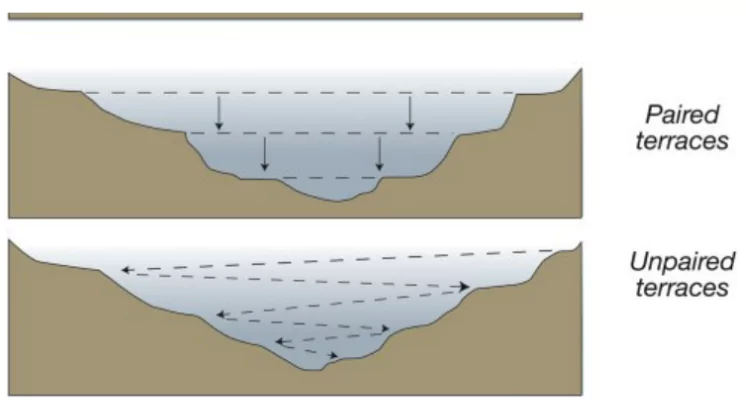![]() June 1, 2024
June 1, 2024
![]() 10486
10486
![]() 0
0
Running water, especially in rainy areas, is a strong force that shapes the land. It flows over the ground in sheets, streams, and rivers. Over the years, it forms different kinds of land features, like valleys when it’s young, wide floodplains when it’s grown up, and curvy meanders when it’s older. One can see how running water changes the land all around us, from the start of a river to where it meets the sea.

 River terraces: River terraces are surfaces marking old valley floors or floodplain levels. They result from vertical erosion by the stream into its own depositional plain.
River terraces: River terraces are surfaces marking old valley floors or floodplain levels. They result from vertical erosion by the stream into its own depositional plain.
| Must Read | |
| Current Affairs | Editorial Analysis |
| Upsc Notes | Upsc Blogs |
| NCERT Notes | Free Main Answer Writing |
| Related Articles | |
| The Ganga River System | Continental Drift Theory |
| Earthquakes: Forces, Causes, and Protective Measures | 7 Continents and 5 Oceans in Order of the World |
<div class="new-fform">
</div>
Latest Comments